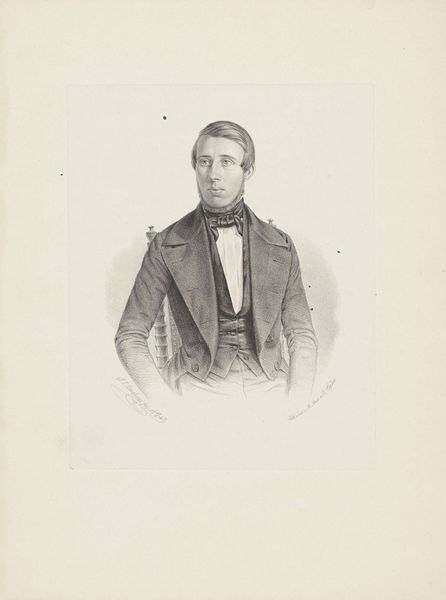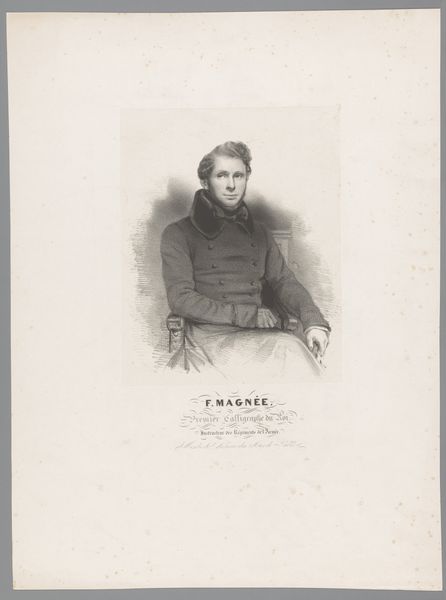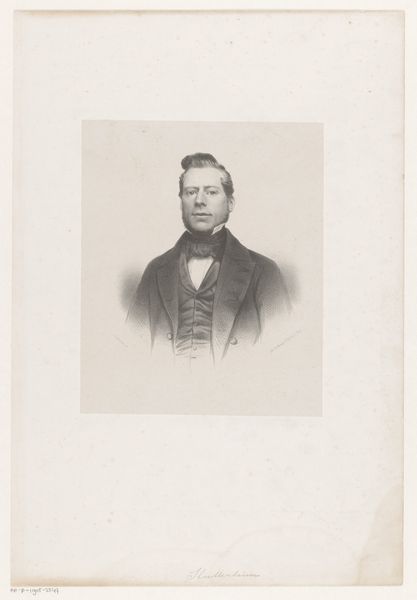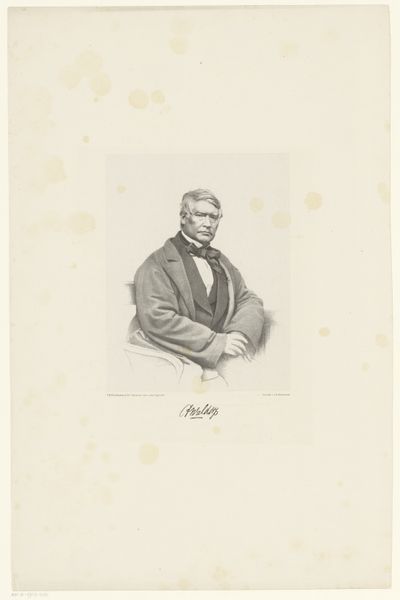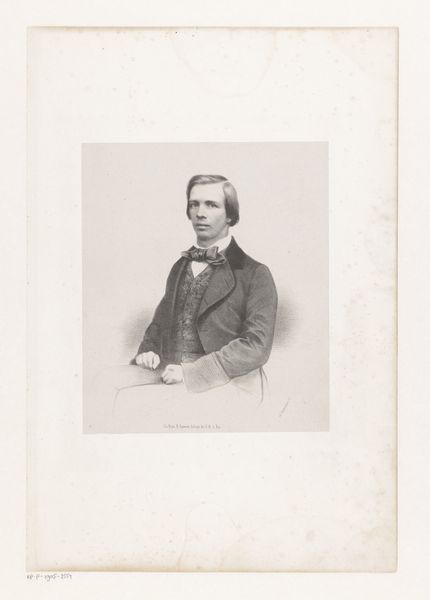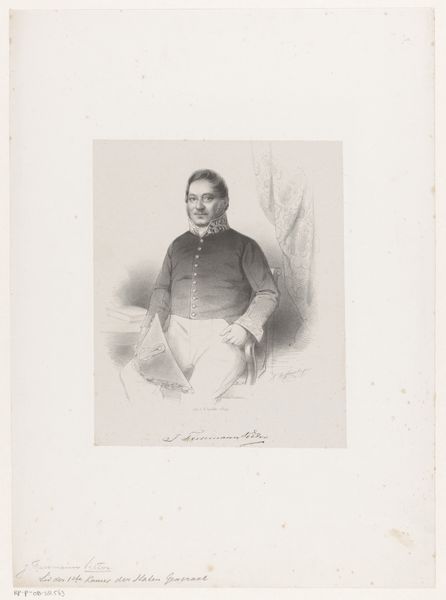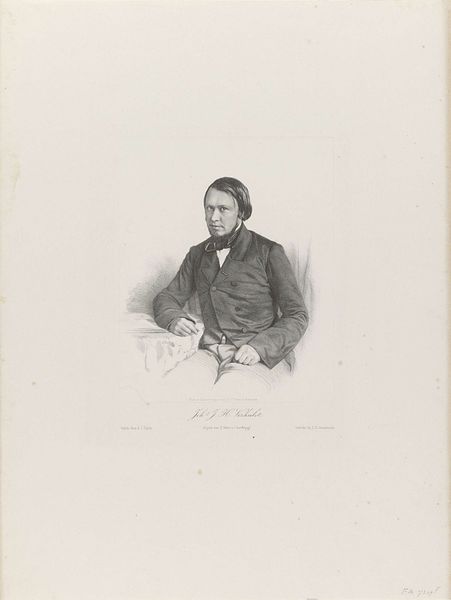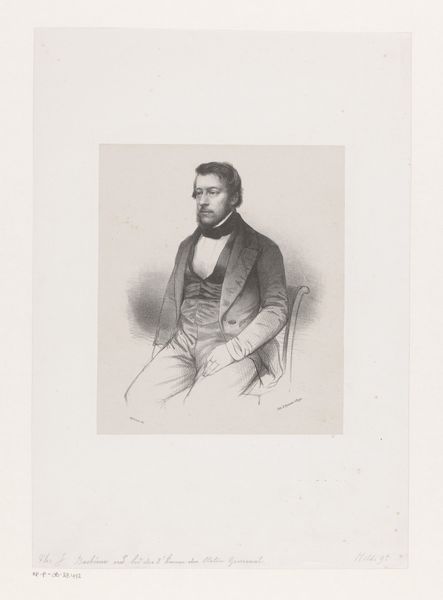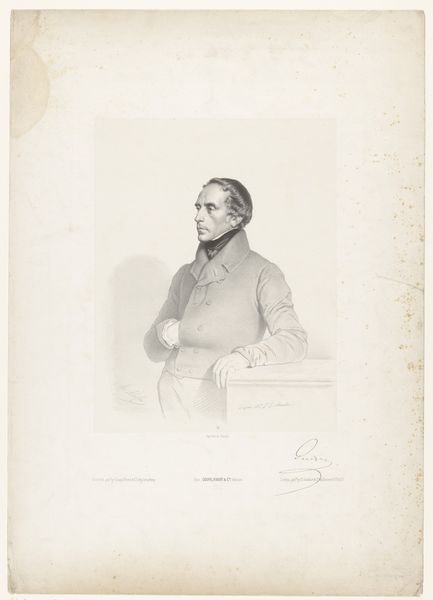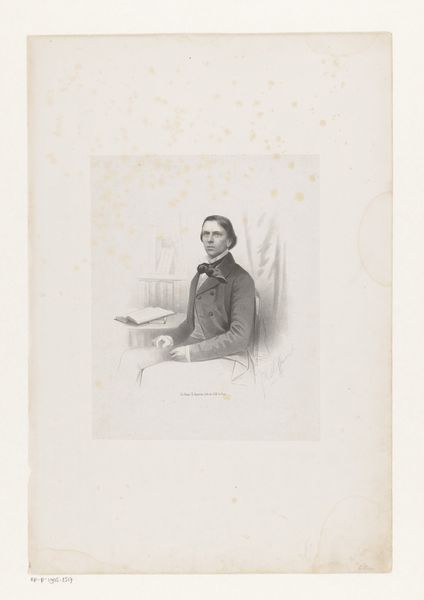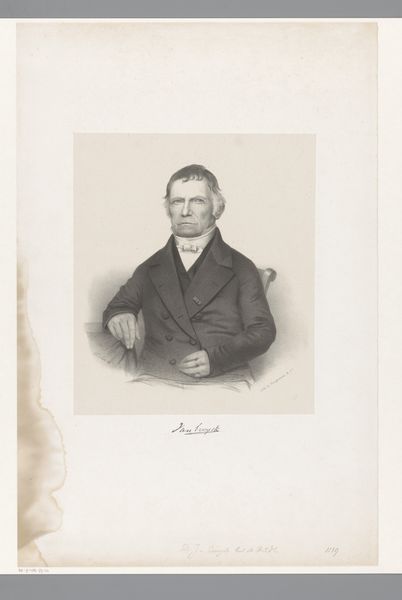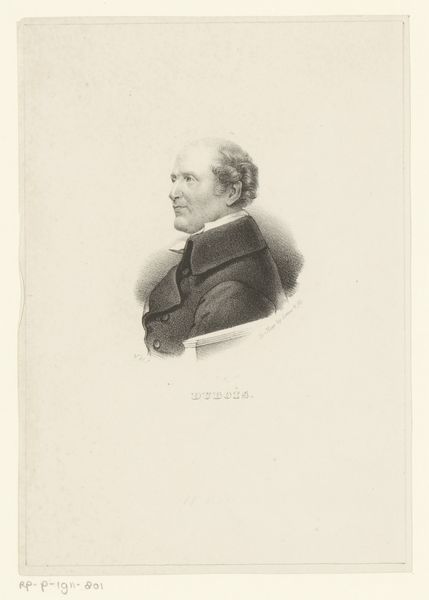
drawing, graphite
#
portrait
#
drawing
#
graphite
#
portrait drawing
#
academic-art
#
realism
Dimensions: height 440 mm, width 295 mm
Copyright: Rijks Museum: Open Domain
Curator: Up next, we have "Portret van Fredericus Johannes Thomas de Bruijn," a graphite drawing crafted around 1851 to 1856 by Johan Hendrik Hoffmeister. Editor: My initial reaction is quite favorable; the precision of line and tone establishes a compelling, though reserved, composition. There’s a remarkable control evident in the gradation of shading—particularly notable on the subject's face and garments. Curator: Indeed, and I think this portrait offers a revealing lens through which to examine the constructs of power and masculinity in mid-19th century Dutch society. The stern gaze, the formal military attire, the almost defiant stance. Editor: Yes, and look how Hoffmeister guides our gaze with strategic tonal contrasts. Observe the light catching his face and that elaborately decorated collar—directing our eyes towards those areas and achieving both a compositional and symbolic purpose. Curator: Precisely, but I wonder how much agency de Bruijn truly had in the construction of this image. He was a member of the Dutch parliament at a time of significant political upheaval, so this portrait potentially acted as a means for asserting his position amidst broader social changes. Was he complicit in maintaining a status quo or subtly challenging it? Editor: I agree that's worth further consideration, though formally speaking, Hoffmeister uses shadow and texture to define shape and depth with remarkable skill. Curator: I find myself considering, who was Hoffmeister making this art for? To what extent did political forces shaped Hoffmeister's artistic decisions and his interpretation of the individual, bearing in mind Hoffmeister's place as an artist situated in a period of shifting power dynamics. Editor: These are excellent avenues to explore. Personally, I can certainly appreciate your socio-historical perspectives, as well as appreciate this composition and form. Curator: Ultimately, both its artistic rendering and its political implications invite continuous exploration. Editor: Indeed, an example where close looking can open multiple analytical approaches.
Comments
No comments
Be the first to comment and join the conversation on the ultimate creative platform.

